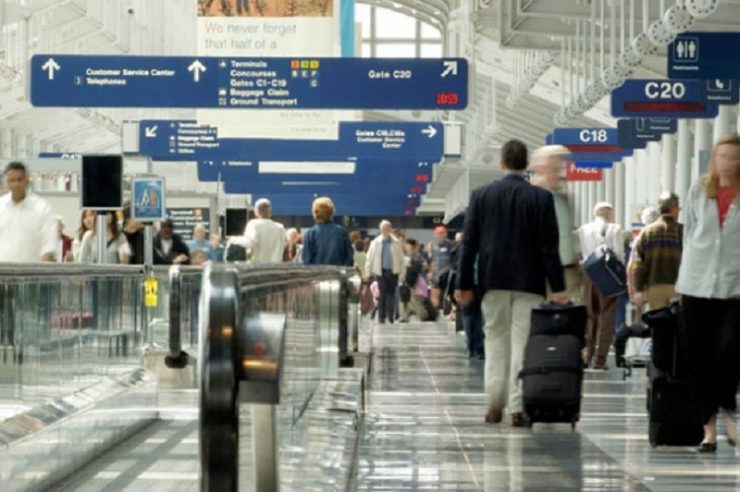GLOBAL air connectivity continues to become more accessible and more efficient, having flown 4.4 billion passengers last year.
According to Alexandre de Juniac, IATA’s Director General and CEO in his press release said record efficiency was achieved with 81.9% of available seats being filled, while fuel efficiency improved by more than 12 per cent compared to 2010.
“The report also revealed that 22,000 city pairs are now connected by direct flights, up 1,300 over 2017 and double the 10,250 city pairs connected in 1998. The real cost of air transport has more than halved over the last 20 years (to around 78 US cents per revenue tonne-kilometre, or RTK),” he said.
Alexandre de Juniac also mentioned that airlines are connecting more people and places than ever before. The freedom to fly is more accessible than ever. And our world is a more prosperous place as a result. As with any human activity, this comes with an environmental cost that airlines are committed to reducing.
“We understand that sustainability is essential to our license to spread aviation’s benefits. From 2020, we will cap net carbon emissions growth. And, by 2050, we will cut our net carbon footprint to half 2005 levels. This ambitious climate action goal needs government support. It is critical for sustainable aviation fuels, new technology and more efficient routes to deliver the greener future we are aiming for,” he added
“Other highlights of the 2018 airline industry performance from the report include are system-wide, airlines carried 4.4 billion passengers on scheduled services, an increase of 6.9% over 2017, representing an additional 284 million trips by air. Meanwhile, the development of the LCC segment continues to outpace that of network carriers,” de Juniac said.
He explained that measured in ASKs (available seat kilometres), LCC capacity grew by 13.4%, almost doubling the overall industry growth rate of 6.9%. LCCs accounted for 21% of global capacity in 2018, up from 11% in 2004. When looking at available seats, the global share of LCCs in 2018 was 29%, reflecting the short-haul nature of their business model. This is up from 16% in 2004. Some 52 of IATA’s 290 current member airlines classify themselves as LCCs, and other new model airlines.
Airlines in the Asia-Pacific region once again carried the largest number of passengers systemwide. The regional rankings (based on total passengers carried on scheduled services by airlines registered in that region) are: Asia-Pacific with 37.1% market share (1.6 billion passengers, up 9.2% from 2017), Europe with 26.2% market share (1.1 billion passengers, up 6.6% from 2017), North America with 22.6% market share (989.4 million passengers, up 4.8% from 2017), Latin America with 6.9% market share (302.2 million passengers, up 5.7% from 2017), Middle East with 5.1% market share (224.2 million passengers, up 4.0% from 2017) and Africa with 2.1% market share (92 million passengers, up 5.5% from 2017).
The top five airlines ranked by total scheduled passenger kilometres flown, were: American Airlines (330.6 billion), Delta Air Lines (330 billion), United Airlines (329.6 billion), Emirates (302.3 billion) and Southwest Airlines (214.6 billion).
The top five international/regional passenger airport-pairs were all within the Asia-Pacific region again this year: Hong Kong-Taipei Taoyuan (5.4 million, down 0.4% from 2017), Bangkok Suvarnabhumi-Hong Kong (3.4 million, up 8.8% from 2017), Jakarta Soekarno-Hatta-Singapore Changi (3.2 million, down 3.3% from 2017), Seoul-Incheon-Osaka-Kansai (2.9 million, up 16.5% from 2017) and Kuala Lumpur International-Singapore Changi (2.8 million, up 2.1% from 2017).
The top five domestic passenger airport-pairs were also all in the Asia-Pacific region: Jeju-Seoul Gimpo (14.5 million, up 7.6%t from 2017), Fukuoka-Tokyo Haneda (7.6 million, up 0.9% from 2017), Melbourne-Tullamarine-Sydney (7.6 million, down 2.1% from 2017), Sapporo-Tokyo-Haneda (7.3 million, down 1.5% from 2017) and Beijing Capital-Shanghai Hongqiao (6.4 million, up 0.4% from 2017).
The top five nationalities travelling (international routes) are: the UK (126.2 million, or 8.6% of all passengers), the US (111.5 million, or 7.6% of all passengers), China (97 million, or 6.6% of all passengers), Germany (94.3 million, or 6.4% of all passengers) and France (59.8 million, or 4.1% of all passengers).
Meanwhile, Star Alliance maintained its position as the largest airline alliance in 2018 with 21.9% of total scheduled traffic (in RPKs), followed by SkyTeam (18.8%) and oneworld (15.4%). [photo special]
















